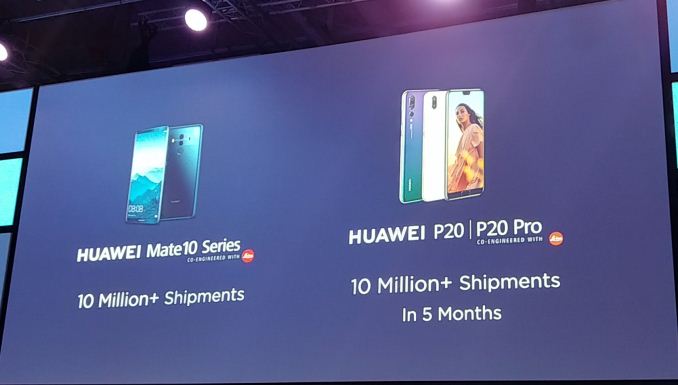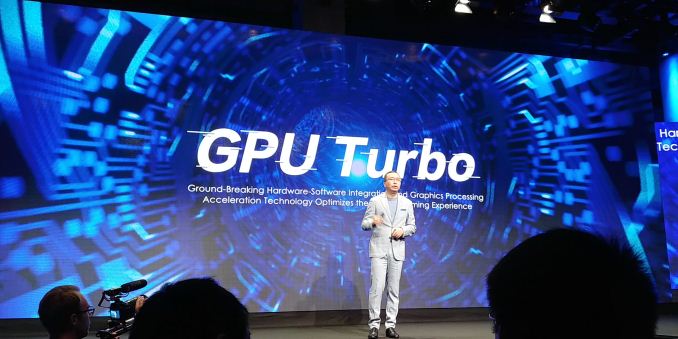Huawei’s GPU Turbo: Valid Technology with Overzealous Marketing
by Ian Cutress & Andrei Frumusanu on September 4, 2018 9:00 AM EST- Posted in
- Smartphones
- Huawei
- Mobile
- Benchmarks
- honor
- Neural Networks
- Kirin 970
- AI
Conclusion: Still A Plus, But
Back in 2015, AnandTech was in the extraordinary position to be the first western publication to actually meet with HiSilicon, reporting on the Kirin 950 from their Beijing media briefing. One of the things I still remember from back then was a definitive sense of humility and a very good sense of self-awareness in regards to the company’s products. Things have changed a lot in the past three years, and Huawei as a company has grown considerably since then.
Huawei and Honor combined now sell 153 million smartphones a year, and Huawei is now the second largest smartphone manufacturer worldwide, recently overtaking Apple. Honor claims it is fifth worldwide. Huawei has also stated that it will raise its future R&D budget from 15% of total revenue (US$13.23 billion) up to 20-30% during the race to 5G. Both are major players in this space, to the point where Huawei’s in-house silicon design team, HiSilicon, creates its own SoCs to help differentiate its products from those based on Qualcomm and MediaTek SoCs.
The explosive growth from Huawei not only goes into R&D, but also marketing. As the company has expanded, we have seen smartphone launch after smartphone launch held in glamorous places in Europe, along with perhaps the biggest sampling program for smartphone launches ever: all members of the invited press to the show, typically around 500-2000, are sampled. This is compared to Samsung and Apple who offer limited units to select press only, or LG who does both unit distribution at briefings (30+) and sampling to press. With the desire to gain brand awareness, and recognition, Huawei has gone into overdrive with its methodology, which has been a metaphorical double-edged sword – while delivering innovative solutions on the technical side, the brand message in some ways strayed from its more humble roots.
Developing technologies like GPU Turbo is going to be key for Huawei. Huawei has obvious gaming performance, image quality, and power efficiency deficits to Qualcomm’s Snapdragon. Playing with the silicon die for price/performance/area is a balancing act and will offer some gains, but typically at the expense of other specifications. This is why GPU Turbo is important: development of GPU Turbo is a "free" efficiency gain from a hardware perspective. Rather than involving new silicon, it's developed through a dedicated software effort, and as a result of the gains the feature is being rolled out across the range of smartphones that both Huawei and Honor offer at retail. GPU Turbo still has ways to go, such as expanding the number of games supported, and potential improvements on the horizon, such as having a single algorithm to cover all use-cases, but the future looks good for it.
Marketing these technologies, like GPU Turbo, is also important. Comparing the headline 60% better performance and 30% better efficiency data on the Kirin 970, with GPU Turbo, to the Kirin 960, without GPU Turbo, almost a year after the launch of the Kirin 970 and not declaring this in every presentation is a deliberate attempt at obfuscation. This is borne through Huawei’s own data in the same presentations, showing the Kirin 980 achieving minor performance and efficiency gains when the feature is enabled. The gains are still worth having, but are vastly lower than the numbers Huawei likes to promote every time GPU Turbo is mentioned.
This, along with the recent discovery of benchmark detection and acceleration to get higher scores, suggests that someone at Huawei is trying to pull the wool over the users’ eyes. It is not a good look, and despite Huawei’s explosive growth, key figures at the company are going to have to look inwards at how they want the company to be perceived on the main stage. The bigger the company is, the more it ends up under the microscope, so maintaining a level of honesty is important, otherwise the trust with the consumer is lost quick and fast. Trying to hide the real world numbers, just to get high on a performance table, just looks bad. It is bad.
The Final Word on GPU Turbo
As mentioned several times in the review, now that GPU Turbo has been explained in greater detail, the technology is genuine as far as we can tell, and is likely going to be a catalyst for a new way for vendors to differentiate themselves across the mobile spectrum, as the competition will be looking into similar solutions.
For everything we just stated about Huawei’s presentations, we hope that the company is giving plenty of kudos and praise to the teams that had the idea, and developed the technology. In an ever competitive landscape where SoC vendors need to differentiate and try to one-up each other, technologies like GPU Turbo are emerging as innovative advantages, improving the overall user experience.
Time, hardware, and software permitting, we will be aiming to go and get fully accurate benchmark data with and without GPU Turbo on the Kirin 980 after its launch. Stay tuned.
Benchmarking and Core Analysis by Andrei Frumusanu
Extra Analysis and Conclusion by Ian Cutress













64 Comments
View All Comments
LiverpoolFC5903 - Wednesday, September 5, 2018 - link
Very interesting to say the least. The improvements from this, although not as much as promised, are still tangible and will make a difference in supported games.Also, alarming to see the quality difference between an Adreno unit and a Mali unit, especially considering they are supposed to be close competitors. I have an S9 with the Mali g72mp18 unit and going by the results on PUBG, it performs much worse than its Adreno counterpart, both in render quality and framerate.
Hisilicon and Samsung should consider using Powervr gpus again, given the clear inability of the Mali to keep up. I have noticed this in the real world as well, with my LG V20 with a Snapdragon 820 lasting MUCH longer than my S9 while running emulators (PSP and Neo Geo), despite being years old.
Manch - Wednesday, September 5, 2018 - link
Maybe its my screen but the Honor Play and the S9 pics make it look like the dude got no undies. LOLumano - Wednesday, September 5, 2018 - link
Amazing article, thank you. Having a P20 pro ( I don't play games on phone ) that was particularly interesting and I really liked the "ethic" behind words, supporting both customers and the company, asking the latter to do the right thing. I think this is the way professional journalism has to be done.Chapeau
AshokGupta - Wednesday, September 5, 2018 - link
Hundreds of Huawei's competaters have tried round and round to prove GPU Turbo is a fake junk, and all of them failed. Now you take over their job. Good Luck, Man!GreenReaper - Wednesday, September 5, 2018 - link
Fake? No. But the reality doesn't exactly match up to the marketing.s.yu - Friday, September 7, 2018 - link
The reality doesn't match up to the marketing, AT ALL. Good as fake.Huawei in all practicality was trying to sell this off as a *universal* performance and efficiency gain of 60%, 30% respectively while in fact it only works on *a handful* of games for about *10%* each. When you're exaggerating your claims by 3x, 6x, it's lying, it's fake.
AshokGupta - Saturday, September 8, 2018 - link
If you read the Chinese media, what happens here is just repetition of what happened exactly right after the technology was launched in CHINA. Including this stupid guess of saying it only covers few games. Then approved by many independent tech media it's applicable for all. Your name indicates you are most probably from China. I suppose you should know it. Don't understand why you come here again giving the approved fake comments.s.yu - Monday, September 10, 2018 - link
Because of the opaque operation of Chinese media. Obviously you're also from China, don't tell me you don't know about the fuss Huawei created buying ads on international sites and then buying fake journalism back in China.http://tech.ifeng.com/a/20180710/45057623_0.shtml
This article was widely spread as legit news but the international content cited was intentionally twisted, it's highly misleading.
When Huawei buys western ads at least the hosts declare bought articles, in China there's no way of telling real journalism from Huawei's smokescreen, so I put off reaching a conclusion until global availability of the technology.
Now from Anandtech's analysis and *interview* it's obviously certain that the tech only works on a handful of games, Huawei even admitted that each profile is trained separately then pushed to devices.
I know a Huawei troll when I see one, I'll be keeping an eye on you in the future.
ET - Wednesday, September 5, 2018 - link
What's with the annoying 'Buy the Right CPU' autoplaying video?psychobriggsy - Wednesday, September 5, 2018 - link
It's really annoying, and on every article, on every page, and it doesn't remember if you pause it on one page then go to the next.